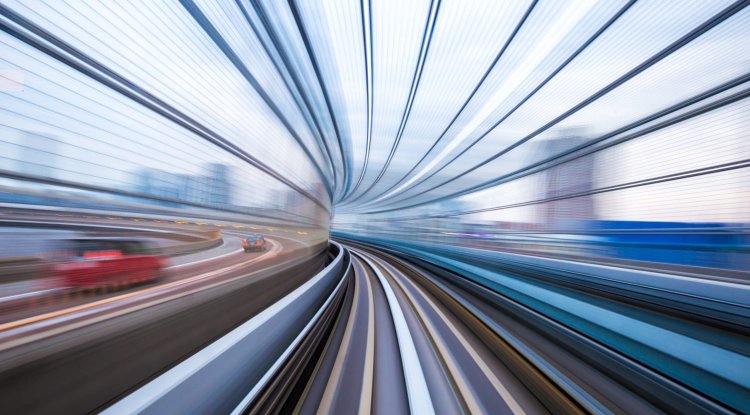CHINA'S FUTURISTIC HIGH-SPEED RAIL NETWORK
Until the end of the 20th century, China's railroads were slow, uncomfortable, and impractical. The journey from one to another end of the country just did not fulfill the demands of the 21st century. Realizing this China developed world's largest high-speed railways.

China started building a high-speed railway network in 2008, and since then all major mega-city clusters are connected with 37,900 km or 23,500 miles. The remaining 3,700 km are to be opened in the following months. Half of this railway length of almost 38,000 km has been finished in the last 5 years! By year 2035 they expect to have 70,000 km long railway!
This way of transport is taking over airlines for the most burdened routes. Many lines with a max speed of 350kph (217miles) are at the disposal of 75% of cities that have a population of half a million or more.
Just to compare, the Europe's most extensive high-speed network is in Spain with speed of 250kph and it is a bit over 2,000 miles long, and this is second place in global league! To make this more clear, UK has just 107 km of railroads! On the other hand, the US has only one route which is Amtrak's North East Corridor, which is qualified as a high-speed railway. Acela trains can go up to speed of 240kph, on an expensive rebuilt section of the existing lane, which is shared with freight trains and commuter.
For China, this railway has significance. Not just as transportation, but as an economic power, modernization, prosperity, and technological growth. It is a powerful tool for social cohesion, the political influence of the ruling Communist party and its leader Xi Jinping, and as a way to connect distant regions of this vast country and introduce distinct cultures to the modern era.
Travel expert Mark Smith commented on China's high-speed railway, saying that it is more reliable, and often faster than domestic flights. Some massive new stations handle a large number of people. System is set to reserve seats and increasingly without the need of paper tickets but just a scanning of valid document at ticket gates.
As example China used technology from Europe and Japan in co-operation with global rail engineering giants such as Mitsubishi, Bombardier and Alstom. Nowadays more domestic companies are becoming leaders in this industry.
It is important to say that, building this railway, very often proved itself as a challenge, considering vast variations of climate, terrain and geology. They did encounter different difficulties passing from frozen, tropical to desert terrain.
China's centralized state funding is something that is helping such fast growth. In this way they avoid the legal problems that for example Europe or the US encounter. On the other hand, small communities along the route receive almost no benefit.
An accident in 2011 (Wenzhou collision), severely shook up the public trust, but last decade no incidents have been reported, so railway is getting more passengers.
In the following years, China is planning to continue the domestic railway growth, to connect with Laos, Bangkok, to develop the New "Silk Road" across Asia and into Europe and Africa through the "Belt and Road Initiative"
By: Vitza - Gossip Whispers





































